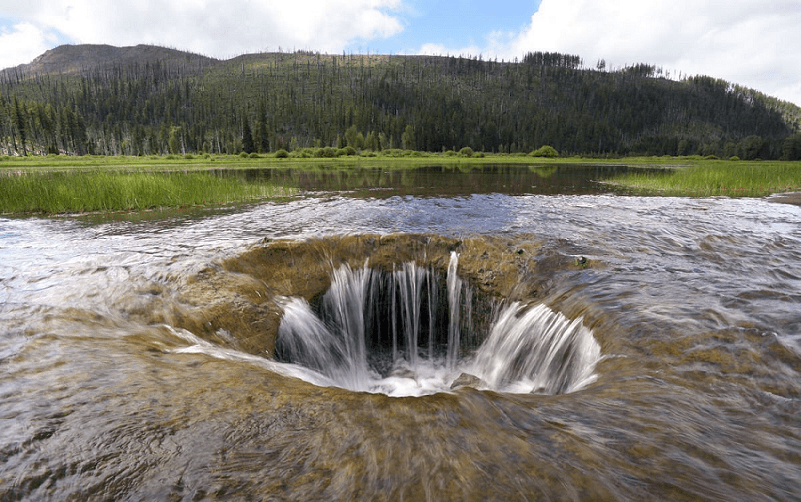Lost Lake Facts
- The body of water popular as Lost Lake represents a truly fascinating geological oddity. That holds true due to the fact that each year the entire lake disappears during the winter. Yet, this does not occur due to evaporation, as you might expect.
- An extraordinary event takes place in this location on an annual basis. Routinely, the entire volume of water in this quite lovely, but otherwise unassuming lake, vanishes. In its case, this water quite literally vanishes down a hole in the ground.
- Plus, its existence never formed a secret to the indigenous population inhabiting the region. Local Native Americans have long known of the uniqueness of the site. They called the lake Kwoneksamach. European Americans first discovered it in the 1870’s.
- In our current age, Lost Lake now plays an important role in the local region. That’s due partly to the fact that it remains quite popular with photographers. This incredible feature also now represents a highly popular camping site.
Related Articles
Lost Lake Physical Description
While the presence of the remarkable vanishing water makes Lost Lake unique, it has much to offer even aside from this. For one, the lake itself has its own appeal. The location also ranks as the second-deepest lake in its particular portion of the country in which it formed.
The wonderful site has a marginally oval shape to it, being only slightly longer than it is wide. Firstly, the lake has a maximum measured length of roughly 5,395 ft (1,644 m). Secondly, the maximum measured width of the body of water equals about 4,150 ft (1,260 m).
Provided its length and width, the natural wonder has a respectable area of coverage. Its measurements give the gorgeous and surprising Lost Lake a surface area of roughly 245 acres (99.1 ha). It also boasts the impressive maximum measured depth of 167 ft (51 m).
Lost Lake Location, Formation, and Mystery
The small, but truly lovely Lost Lake lies in an intentionally undeveloped portion of its continent. It formed in Santiam Pass, Oregon, in the United States, in North America. The magnificent and mysterious body also forms part of the Mount Hood National Forest.
The truly awesome site itself further sits amid even more natural beauty, which only serves to augment its own. To begin with, to the east the wonder of nature remains bounded by the huge Lost lake Butte, which stands an impressive 4,468 ft (1,362 m) high.
But the awesomeness of its surroundings does not end there. To the southwest of the region lies the 4,556 ft (1,389 m) Preachers Peak. This fascinating development of Nature also receives its water from a total of three small but active creeks.
The most astounding feature of this extremely fascinating site, though, doubtless remains the mystery surrounding the vanishing water. That remains true due to the incredible fact that its outlet continues to remain a complete enigma to any who research it.
Amazingly, in fact, despite numerous studies and investigations, no outlet for the disappearing water has ever been found by anyone. Although research, study, and various explorations continue, this aspect of Lost Lake remains a complete puzzle.
Features Sharing Its Region
Check out our other articles on 7 Outstanding Flightless Birds of the World, Purple Frog, Gocta Cataracts, Crabeater Seal, Brazilian Wandering Spider, Thresher Shark, Kemps Ridley Sea Turtle

